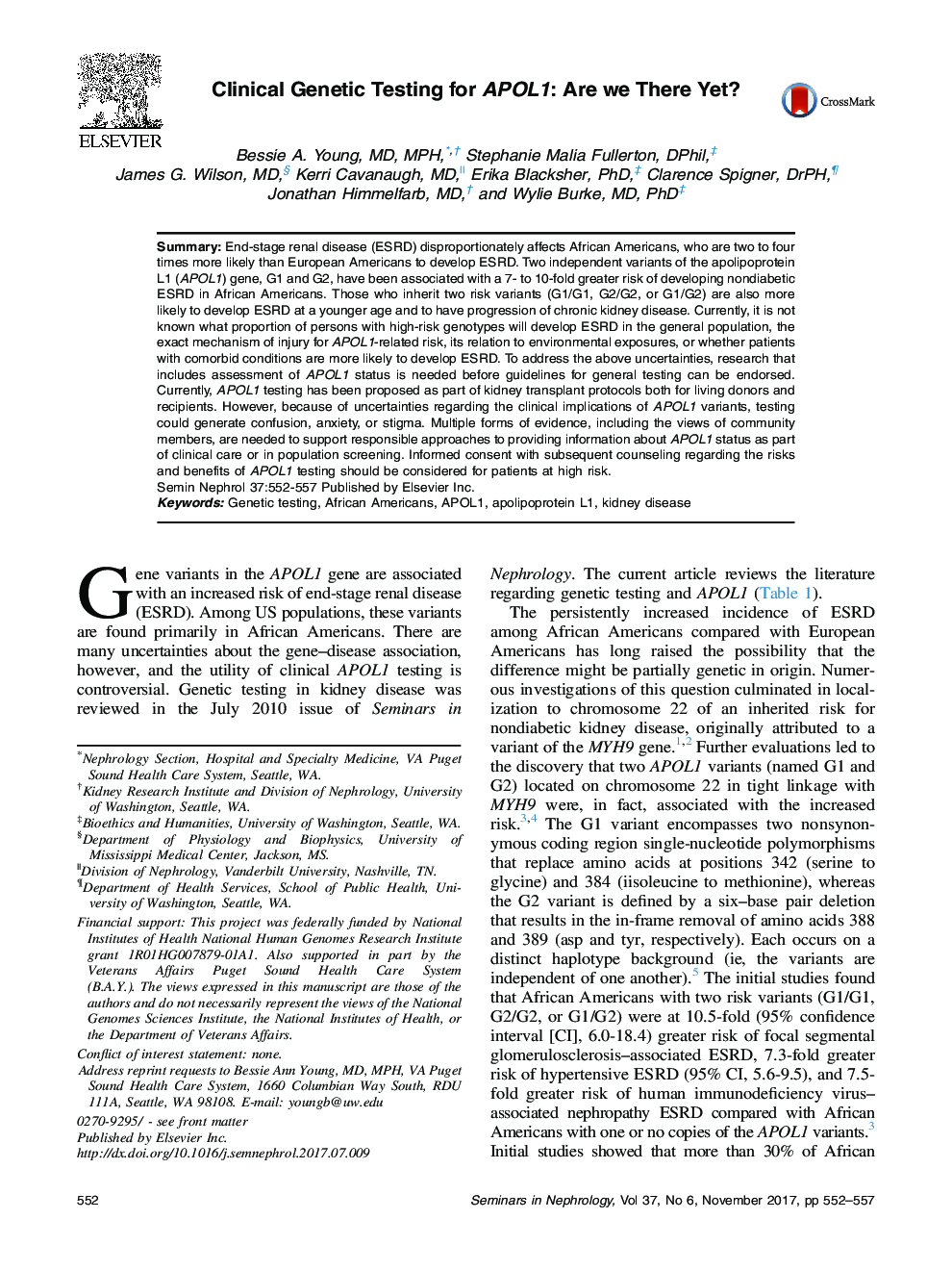| کد مقاله | کد نشریه | سال انتشار | مقاله انگلیسی | نسخه تمام متن |
|---|---|---|---|---|
| 8775228 | 1599227 | 2017 | 6 صفحه PDF | دانلود رایگان |
عنوان انگلیسی مقاله ISI
Clinical Genetic Testing for APOL1: Are we There Yet?
دانلود مقاله + سفارش ترجمه
دانلود مقاله ISI انگلیسی
رایگان برای ایرانیان
کلمات کلیدی
موضوعات مرتبط
علوم پزشکی و سلامت
پزشکی و دندانپزشکی
بیماریهای کلیوی
پیش نمایش صفحه اول مقاله

چکیده انگلیسی
Summary: End-stage renal disease (ESRD) disproportionately affects African Americans, who are two to four times more likely than European Americans to develop ESRD. Two independent variants of the apolipoprotein L1 (APOL1) gene, G1 and G2, have been associated with a 7- to 10-fold greater risk of developing nondiabetic ESRD in African Americans. Those who inherit two risk variants (G1/G1, G2/G2, or G1/G2) are also more likely to develop ESRD at a younger age and to have progression of chronic kidney disease. Currently, it is not known what proportion of persons with high-risk genotypes will develop ESRD in the general population, the exact mechanism of injury for APOL1-related risk, its relation to environmental exposures, or whether patients with comorbid conditions are more likely to develop ESRD. To address the above uncertainties, research that includes assessment of APOL1 status is needed before guidelines for general testing can be endorsed. Currently, APOL1 testing has been proposed as part of kidney transplant protocols both for living donors and recipients. However, because of uncertainties regarding the clinical implications of APOL1 variants, testing could generate confusion, anxiety, or stigma. Multiple forms of evidence, including the views of community members, are needed to support responsible approaches to providing information about APOL1 status as part of clinical care or in population screening. Informed consent with subsequent counseling regarding the risks and benefits of APOL1 testing should be considered for patients at high risk.
ناشر
Database: Elsevier - ScienceDirect (ساینس دایرکت)
Journal: Seminars in Nephrology - Volume 37, Issue 6, November 2017, Pages 552-557
Journal: Seminars in Nephrology - Volume 37, Issue 6, November 2017, Pages 552-557
نویسندگان
Bessie A. MD, MPH, Stephanie Malia DPhil, James G. MD, Kerri MD, Erika PhD, Clarence DrPH, Jonathan MD, Wylie MD, PhD,